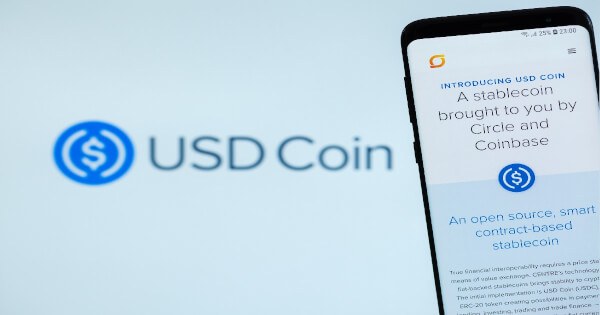How Programmable Wallets Facilitate USDC Payments for Gateways
Zach Anderson Aug 23, 2024 02:07
Circle's Programmable Wallets streamline USDC payments for payment gateways, simplifying blockchain integration and enhancing transaction efficiency.

Circle’s Programmable Wallets are revolutionizing the way merchants integrate USDC payments into their payment gateways. By leveraging these wallets, merchants can streamline blockchain transactions, making them as efficient and user-friendly as traditional card payments, according to Circle.com.
Enabling USDC Payments with Programmable Wallets
Circle’s Programmable Wallets APIs and Gas Station feature enable merchants to set up treasury wallets for receiving payments, which then transfer funds to merchant wallets for more permanent storage. This setup minimizes the complexities of managing blockchain node infrastructure and transaction fees.
Step-by-Step Implementation
First, developers create developer-controlled wallets using Circle’s APIs, which provide control over wallet keys and facilitate blockchain transactions on behalf of merchants. The server-side Node.js SDK abstracts differences across blockchains, allowing developers to build transaction flows in a blockchain-agnostic manner.
The Gas Station feature simplifies the process of sponsoring transaction fees, eliminating the need to manage paymasters or fee payers. This is particularly useful when transferring USDC from treasury wallets to merchant wallets, as it allows gas fees to be paid in a preferred currency like USDC instead of native blockchain tokens like SOL.
Setting Up Developer-Controlled Wallets
To set up developer-controlled wallets, developers create a wallet set using the server-side SDK. The wallet set is controlled by a single cryptographic private key, simplifying the management of multiple wallets.
Once the wallet set is created, developers can generate treasury wallets to receive payments. These wallets are then used to accept customer payments, with the wallet addresses provided to customers for transaction purposes.
Accepting Payments and Managing Transactions
After setting up the treasury wallet, developers can monitor the wallet’s token balance to confirm payments. It is recommended to store transaction session information in a database for better management and to update records with transaction details once confirmed on the blockchain.
To transfer USDC to merchant wallets, developers can use the Gas Station feature to sponsor gas fees, ensuring a seamless transfer process. This approach minimizes the hassle of managing gas fees for thousands of transactions.
Block Confirmation and Efficiency
Block confirmation times can affect payment processing speeds. For example, Ethereum might take up to three minutes for a transaction to be considered complete. Solana, however, offers a faster block confirmation time of around 400 milliseconds, making it an ideal choice for merchant payments.
Conclusion
Circle’s Programmable Wallets offer a robust solution for payment gateways looking to integrate USDC payments. By utilizing Solana’s advanced processing capabilities and the Gas Station feature, merchants can provide an efficient and user-friendly payment experience. Programmable Wallets also allow for scalability to multi-asset and multi-blockchain infrastructure, future-proofing payment gateways as needs evolve.
Image source: Shutterstock.jpg)
